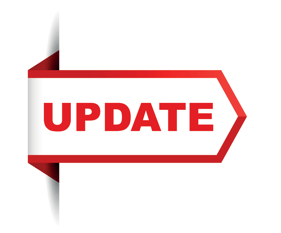Lending Compliance Update

In case you missed it, there have been several recent developments related to Lending compliance.
Credit Card Disclosures Relief
In light of COVID-19, the CFPB recently stated it does not intend to cite violations for credit card issuers who are unable to obtain a consumer’s electronic consent to receive certain disclosures in compliance with E-SIGN. Card issuers are still expected to obtain a consumer’s verbal consent to electronic delivery of the disclosures as well as verbal confirmation that the consumer can access and review the electronic, written disclosures. Card issuers are also expected to verify the accuracy of the email address used for communications.
CFPB Issues COVID-19 Credit Reporting FAQ’s
The CFPB recently released FAQs on credit reporting in light of the COVID-19 pandemic. These FAQs largely restate the information the CFPB gave us on April 1st; however, there are a few additional details.
If you defer payments, allow partial payments or otherwise modify a loan obligation or credit agreement because a borrower is impacted by COVID-19, you cannot advance the delinquent status. This means, a borrower who is current at the time of a payment “accommodation” is to remain current during the timeframe covered by the accommodation. For example, a borrower 30 days past due at the time of accommodation should not be reported as 60 days past due during the accommodation timeframe. However, if a borrower 30 days past due at the time of accommodation is brought current as a result of a modification or otherwise, the borrower must be reported as current. This will apply to any COVID-19 modifications from January 31, 2020 until 120 days after the end of the declared national emergency.
The CFPB reminds furnishers to make sure all information provided is accurate. Additional information, such as the scheduled payment, amount past due, etc., may also need to be updated. It’s not sufficient to only provide a code to indicate an account is impacted by a disaster or in forbearance.
Remember, not only do you need to get credit reporting accurate for regulatory reasons but this is also, understandably so, an area where many complaints occur!
Interagency Principles for Small-Dollar Lending
In May, the Federal Reserve, FDIC, OCC and NCUA issued a statement on “Interagency Lending Principles for Offering Responsible Small-Dollar Loans” to encourage responsible small loans to both individuals and small businesses. Per the statement, loan policies, practices and controls related to small-dollar loans should generally address the following:
- Structures
- Pricing
- Underwriting
- Marketing and Disclosures
- Servicing and Safeguards
Around the same time of this statement, the CFPB issued No-Action Letter (NAL) Templates for Loss Mitigation and Small-Dollar Loans. The intent of an NAL is to offer some regulatory protection to institutions looking to develop new, innovative ways to improve products and services believed to benefit consumers. Per the CFPB, NALs provide increased regulatory certainty through a statement that the Bureau will not bring a supervisory or enforcement action against a company for providing a product or service under certain facts and circumstances.
These are essentially application templates for institutions wanting to apply for their own NALs using some groundwork previously established to:
- Assist struggling borrowers to avoid foreclosures; or
- Offer Small-Dollar loan products.
There is no requirement for you to do anything with these NALs. In fact, the one geared towards small-dollar loans is limited to those institutions with more than $10 billion in assets or those affiliated with such entities. The NALs are just a potential option if you’re interested in pursuing one of these programs and are looking for some regulatory protections.
HMDA Data
The FFIEC announced the availability of 2019 HMDA data. Aggregate and Disclosure reports are available as well as Modified LARs and a HMDA Data Browser to help filter and analyze data. You can read the CFPB’s observations as well.
Loss Mitigation Proposal
The CFPB released an interim final rule related to offering certain loss mitigation options based on an incomplete loss mitigation application. The rule is effective July 1st. We’ll be digging into this and bringing you anything you need to know.
Qualified Mortgage Proposals
The CFPB issued two new proposals related to the Qualified Mortgage Rule. The first proposal would add a rate spread threshold for standard QMs but remove Appendix Q and the 43% DTI limit, although requirements to consider and verify applicants’ DTI would remain. The second proposal would extend the temporary category of QMs for loans eligible for purchase or guarantee by Fannie or Freddie until a revised final rule for the standard QM definition goes into effect or the GSE’s exit conservatorship, whichever occurs first. This temporary QM category would otherwise expire no later than January 10, 2021. Again, these are just proposals at this point.
Published
2020/07/02
See All FREE LENDING TOOLS

Amy Kudlacek
Amy brings many years of banking and compliance experience to Banker’s Compliance Consulting. She has worked for both large and small financial institutions and spent time working in every area of a bank. She started out as a teller in college and eventually became a branch manager. Her love, however, was always compliance. Amy began her career with Banker’s Compliance Consulting in 2000. Her knowledge and experiences have allowed her to develop a well-rounded and practical approach to regulatory compliance. Amy is CRCM certified, has a Bachelors Degree in Business Administration and is a graduate of the ABA Compliance School. Amy & her husband have two children at home and stay busy following their activities. They spend a lot of time in the bleachers!
